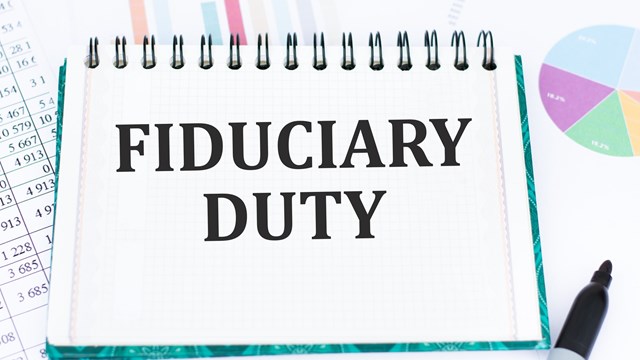
Two weeks after Angel Agostino renewed her small insurance policy with Ron Tepperman, Inc., a base-
ment fire caused her apartment to burn down and she lost everything. I got insurance because I thought the roof would leak, Agostino explains. I never thought I would lose everything. Because she had a small policy, she was only 50 percent covered. Now I will double my insurance, says Agostino, and I will never be without again. You don't realize what you have accumulated through the years and how much it costs to replace things. My daughter's toys alone cost a fortune. After a few weeks, I'm still not back on my feet.
Many co-op and condo owners do not realize the importance of having a homeowner's insurance policy. Nor do they realize where the responsibilities liewith the building or with themshould tragedy strike. Co-op and condo buildings do cover a minimal amount of damage to the dwelling, but it depends on the proprietary lease or by-laws, which can vary from building to building. Basically, in a cooperative you do not own the apartment, the corporation does. In the event of a loss, the co-op is responsible for the structural elements of the building and must replace the walls and flooring to match the original design. The shareholder is responsible for any wall or floor coverings. In a condo, you own the apartment and are responsible for all structural elements. In either situation, the building does not cover your personal property, improvements you have made or your liability exposurethese are solely the shareholder or unit owner's responsibility.
How Much is Enough?
How much insurance you need depends on what you own, the extent of the potential damage, what is covered by your building and what liability claims can be filed. Rachel Barrett, vice president of American Phoenix Corp. of New York, an insurance brokerage firm, explains, The purpose of an insurance company is to put you back to where you were before the loss. You need to be fully covered in the event of a tragedy.
Before you purchase a policy, decide how much everything in your apartment is worth, from your clothing to your coin collections, from your renovated bathroom to your refinished floors. And when it comes to personal liability, you want to be fully covered if you are injured or you unintentionally injure someone else.
Get as much coverage as possible, advises Hank Reineking, area vice president of Arthur J. Gallagher & Co. of New York Inc., insurance brokers and agents since 1947. The cheapest isn't always the best. You want enough coverage so that in the event of a loss you can be whole again, he says.
Have an insurance company look at your building's proprietary lease to see what is covered, says Barbara Strauss, senior vice president of Owens Group, a 35-year-old insurance brokerage firm, and speak to a professional who understands the type of building you live in.
Ask your agent about the scope of your policy and what your limitations are, says Bill Goff, regional underwriting manager for Allstate Insurance Company, an underwriter for 60 years, and have him help you assess what your needs are.
Coverage of Contents
Standard insurance policies include two basic components: coverage of your contents and dwelling, and protection against liability. The contents portion of your policy cov ffb ers furniture, fixtures, electronic equipment, clothing, computer equipment, jewelry, fine arts, crystal, silverware, musical instruments, china and fur coats in the event of a fire, vandalism, theft or water damage.
Ron Tepperman, a recent past president of the Professional Insurance Agents of New York and owner of Ron Tepperman, Inc., an insurance brokerage firm founded in 1975, has a rule of thumb when it comes to what is covered under the contents portion of a policy: Anything you can walk out of your apartment with is covered. However, policies exclude or limit your coverage on certain items such as jewelry, furs, fine arts and antiques unless these items have been scheduled under a floater on your policy.
For example, if you have a $10,000 engagement ring, a standard policy will not cover the total value of the ring. If, however, you schedule the ring and its value on your policy, you are entitled to a full refund if the item is destroyed or lost or stolen wherever you are. Any collectible, down to baseball cards, can be scheduled, says Reineking. But it can get cumbersome if you are scheduling a lot of items so you may want to increase your policy by a few thousand dollars. Although there is no limit as to how much coverage you can purchase, insurance companies do not advise purchasing a policy of less than $35,000.
Included in many policies is coverage for additional living expenses or loss of use. If your apartment becomes uninhabitable because of smoke and water damage or fire your insurance company will pay the difference between your everyday living expenses and your new expenses during the restoration of your unit within reasonable means.
Liability Coverage
The liability portion of your policy refers to bodily injury and personal injury or libel and slander. Insurance companies advise having liability coverage of no less than $300,000. It's so inexpensive. You can purchase a million dollars worth of liability for a mere $100, says Strauss. You are covered for bodily injury to yourself and others in or away from your home and damage to someone's property. If a leaky faucet damages an expensive painting in the apartment below yours, you are covered. You are also covered for dog bites, skiing accidents, hitting someone with a golf ball or someone falling in your living room. The exception to this policy is intentional injury incurred through a fight. When it comes to personal injury it gets more complicated because you have to prove libel or slander and a jury has to make a decision in your favor.
Additional Protection
One of the most important attributes to a policy is full replacement value as opposed to cash value. With full replacement value you are reimbursed for what the object will cost you today to replace it as opposed to what it cost less the depreciation value. After a disaster you want to be made whole again, you can't do that without full value, says Reineking. We always include replacement value in a policy, adds Barrett. It gives new for old.
Extremely important and often overlooked in a policy, says Strauss, is additions and alterations coverage, better known as improvements and betterments. This policy addition will cover you for the costs of any improvements or additions you have made such as built-ins or new cabinetry.
Another policy addition to consider is all-risk coverage which means you are protected against any tragedy unless stated in your policy. It is what you want as opposed to named perils which covers you only for what is listed on the policy. The few exceptions to the all-risk coverage are loss due to nuclear war, riots, earthquakes and wear and tear. All-risk limits the value of an item so it is a good idea to schedule the expensive ones. Most policies are evolving toward all-risk, says Goff, as opposed to named perils which are restricted.
Loss assessment coverage is another addition worth looking into. If a windstorm blows off part of a building's roof and the building assesses the tenants because it ran out of insurance o bf1 r there was no insurance, you can be covered by your homeowner's policy. The coverage protects you up to $5,000 for the assessment in a basic plan or up to $50,000 for an additional premium. The cost is so minimal, a mere $50 a year, to have $50,000 coverage, there is no reason not to have it, says Barrett. As always, it does not cover routine maintenance and wear and tear.
A nice addition to a policy is off-premise theft. If you get mugged in the city, your car is broken into and your packages are stolen, or your luggage is robbed from your hotel room during vacation, you are covered.
What would you do if you had to start over and had no insurance? Could you handle it? Probably not. But why wait and find out? Obtaining homeowner's insurance now will ensure a secure future from disastrous problems. Even if you lose everything, an insurance company can help you get your life back together.
Angelina Mason is Assistant Publisher of The Cooperator.






2 Comments
Leave a Comment